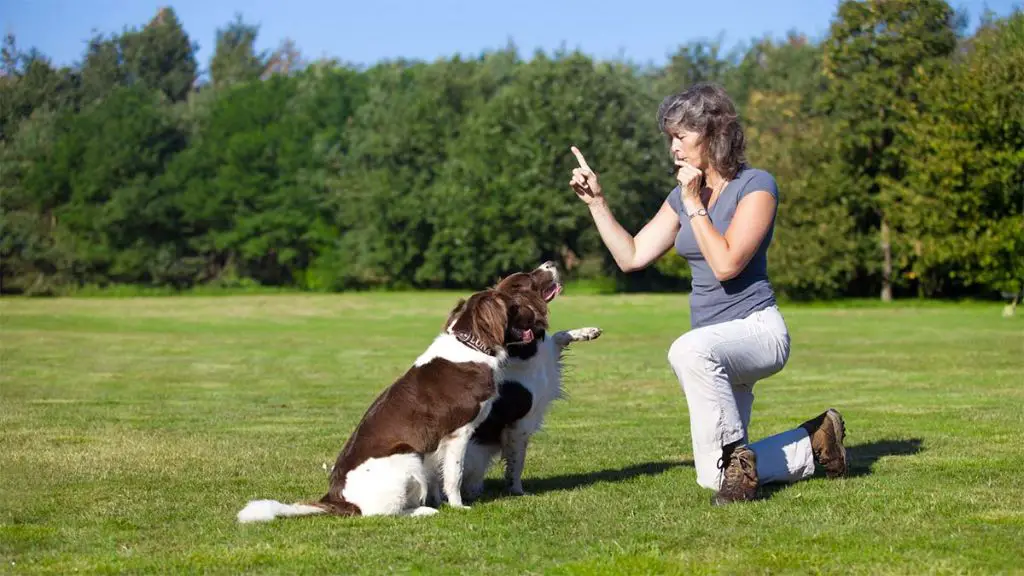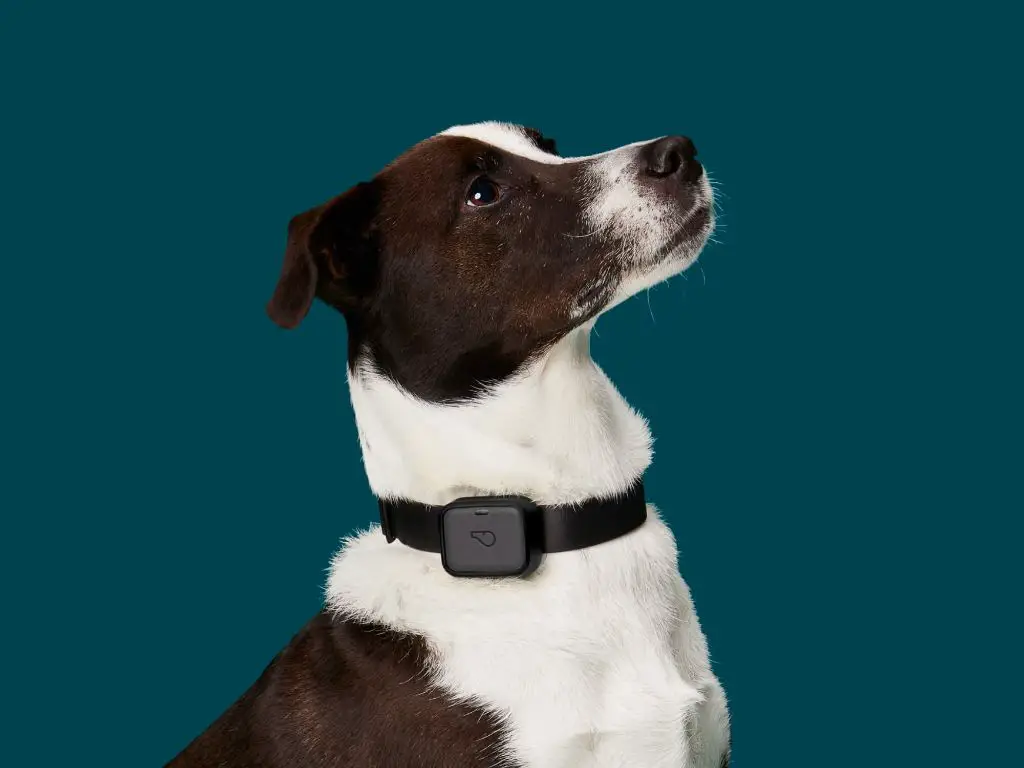What Are Dog Whistles?
A dog whistle is a training tool used specifically for dogs. It emits a high-frequency sound that is barely audible to humans but can be heard very clearly by dogs (Merriam-Webster, 2022).
Dog whistles work by producing a high-pitched tone at a frequency between 16,000 to 22,000 Hz that is within dogs’ audible range but above humans’. The sound gets the attention of dogs but is practically silent to human ears. This allows dog owners to give commands that only their dogs can hear (Wikipedia, 2022).
The main purpose of a dog whistle is for obedience training and recall. The whistle provides a clear and consistent signal the dog can learn to respond to even from a distance. For example, a dog owner can use a whistle to call their dog back if it is off-leash. The whistle can also be used as a positive or negative reinforcement during training sessions (Vox, 2016).
History of Dog Whistles

Dog whistles were invented in 1876 by Francis Galton, who was Charles Darwin’s cousin. Galton was an eccentric scientist and inventor who was interested in studying the range of sounds that could be heard by various animals, including dogs. As described in Galton’s book Inquiries into Human Faculty and Its Development, the original dog whistle was designed as an experimental whistle to test the hearing range of dogs (Wikipedia, Gizmodo).
The earliest dog whistles produced by Galton were basic devices made of a hollow metal tube with holes cut at each end to allow sound to pass through. By blowing through the tube, Galton found that it produced a high-pitched tone that was practically inaudible to humans but caught the attention of dogs (The Dog Whistle).
Over time, dog whistle technology evolved from these early experimental designs into more practical and portable versions for dog owners and trainers. Modern dog whistles are often made of plastic or metal and shaped like a small rod or tube. The most common type is the pea whistle, which contains a pea-sized cavity resonator that creates the high-pitched tone when blown into through a hole at one end (Wikipedia).
Today’s dog whistles can produce a variety of ultrasonic tones for different training purposes. While early versions could only make one tone, adjustable whistles now allow creating different pitches to suit each dog’s hearing range (The Dog Whistle). Electronic whistles are also available to provide consistent, precise sounds. But the basic concept behind Galton’s original design remains the same over a hundred years later.
How Dog Whistles Work
Dog whistles work by producing extremely high frequency sounds that are inaudible to the human ear but audible to dogs. The average human hearing range is between 64 Hz to 23,000 Hz, while a dog’s hearing range is approximately 67 Hz to 45,000 Hz, with some dogs able to hear sounds up to 65,000 Hz https://www.lsu.edu/deafness/HearingRange.html
Dog whistles are designed to produce frequencies in this higher range that dogs can hear but humans normally cannot. The whistle mechanism itself works by restricting the flow of air through a small opening, which causes the air to vibrate rapidly as it is forced out. This vibration creates sound waves. The length of the opening determines the frequency – a shorter opening will produce a higher frequency sound wave. Dog whistles have a very short opening to create sounds in the ultrasonic range.
The physics behind how this works has to do with the relationship between wavelength and frequency. The frequency of a sound wave refers to how many cycles or vibrations occur in one second. Wavelength refers to the distance between two consecutive points of a sound wave. Higher frequency sounds have a shorter wavelength, which allows dogs to detect them even though the sounds are too high-pitched for human ears.
Using Dog Whistles for Training
Dog whistles are commonly used for a variety of training purposes. Some of the main types of training they are utilized for include:
- Obedience training – Whistles allow trainers to immediately get a dog’s attention and issue commands from a distance.
- Barking control – A sharp blast from the whistle when a dog barks can help curb excessive vocalization.
- Recall training – Associating the whistle with coming when called helps reinforce this important command.
- Field and hunting dog training – Whistles allow hunters to direct and command their dogs from afar.
Effective techniques for training with a dog whistle involve consistently using the whistle before issuing a verbal command, and rewarding with treats when the dog responds appropriately. This helps the dog learn to listen for and react to the whistle cue. Short, crisp blasts are more effective than long blows.
Pros of using dog whistles for training compared to other methods include the ability to communicate with dogs over long distances where verbal commands would go unheard. The whistle sound also cuts through ambient noise. Additionally, the whistle allows delivering more timely feedback than verbal corrections.

Potential downsides include the possibility of overusing the whistle and annoying or confusing dogs with too many blasts. Verbal praise is still important for reinforcing good behavior. And some very sensitive dogs may dislike the high-pitched sound. Proper conditioning and timing are key. But overall, whistles represent a useful addition to any dog trainer’s toolbox.
For more details on how to effectively use dog whistles for training, check out these guides from Wildfowl and Crafty Canine Club.
Silent Aspect of Dog Whistles
Dog whistles are often referred to as “silent” whistles, but they are not completely silent. The high frequency sound that dog whistles emit falls outside of the range of human hearing, which is typically 20 Hz to 20,000 Hz [1]. However, dogs with their superior sense of hearing can detect sounds between 67 Hz to 45,000 Hz [2].
So while the whistle itself makes a hissing sound that is inaudible to humans, dogs can clearly hear the high-pitched sounds. To demonstrate, listen to this recording comparing a silent dog whistle to how a dog hears it:
Human hearing range:
Dog hearing range:
So while dog whistles are often referred to as “silent”, they are only silent to humans, not to canines. The high frequency sounds are clearly audible to dogs.
Other Uses of Dog Whistles
Dog whistles have several common uses beyond basic obedience training. Their high frequency allows them to be heard over long distances, making dog whistles very useful for signaling dogs in wide open spaces.
For example, dog whistles are frequently used in dog sports like agility competitions, flyball, and disc dog events. The whistles allow handlers to effectively communicate with their dogs even when they are far away across a field or arena.
Dog whistles also serve an important purpose in activities like hunting, herding, and search and rescue. The whistle’s sound carries much farther than a human voice, enabling working dogs to receive signals from their handlers over vast distances. Shepherds can gather in flocking animals, hunters can call in hunting dogs, and search and rescue personnel can locate a missing dog even if they cannot see or hear the animal directly (Source).
The highly audible but discreet nature of dog whistles makes them ideal communication tools in a variety of working dog situations. Whether directing competitive dogs, herding livestock, locating game, or finding a lost person, a good whistle allows handlers to control and direct their dogs even over long ranges.
Controversies Over Dog Whistles
Dog whistles have sparked some controversies over the years. One issue that has arisen is complaints about noise pollution from the high-pitched sounds they emit. Though silent to human ears, dogs can still hear the shrill noise, which has led some people to argue the whistles disturb the peace in neighborhoods. This has even led to legal restrictions in some areas. For example, in some parts of California, dog whistles cannot be blown after 10pm due to noise ordinances (Source).
Another controversy stems from debates around training methods. Some dog owners and animal rights activists argue that the use of dog whistles can be cruel or aversive if not utilized correctly. They believe positive reinforcement should be the primary method for training dogs. Others counter that whistles are effective tools when used properly and do not harm dogs. There is continued disagreement around when and how dog whistles should be incorporated into training programs (Source).
Choosing the Right Dog Whistle
When selecting a dog whistle, there are several features to consider:
The frequency or pitch of the whistle is important. Standard dog whistles emit sounds in the 23-54 kHz range. Some specialized whistles go up to 100 kHz for hunting dogs. The higher frequency whistles are hearable for dogs but nearly silent to humans. Lower frequencies around 5-8 kHz can be heard by both humans and dogs.
The loudness or volume level will determine how far away your dog can hear the whistle. Louder whistles with higher decibel levels can transmit sounds for longer distances.
Materials like plastic, aluminum, and wood affect durability and sound quality. Plastic is inexpensive but may not last as long. Aluminum has good sound projection. Wood looks nice but can crack over time.
When it comes to brands, Acme and SportDOG are top recommended companies for quality and reliability.
The main advantages of dog whistles are effective communication over long distances, selectively signaling specific dogs, and not disturbing human ears. Drawbacks are the learning curve to use them properly and the need to carry an additional device.
Caring for Your Dog Whistle
Taking proper care of your dog whistle is important to keep it working effectively. Here are some tips for cleaning, maintenance, and storage:
Cleaning and Maintenance
– Regularly wipe down your dog whistle with a soft cloth to remove dirt, dust, and saliva. You can use a mild soap and water solution if needed.
– Avoid submerging plastic whistles in water, as this can damage them over time.
– Check for blockages in the whistle opening and use a pipe cleaner to gently remove any debris. Don’t stick anything sharp in the opening.
– Replace batteries promptly when they start to run low. Weak batteries will impair the whistle’s sound.
Proper Use
– When blowing the whistle, purse your lips together around the mouthpiece to direct a focused stream of air into the chamber. Avoid excessive moisture buildup.
– Start with short blasts of 1-2 seconds to avoid overworking your lungs. Gradually increase duration as you gain experience.
– Ensure you are blowing with enough force to generate the ultrasonic tone. Weak puffs will not be audible to dogs.
Storing When Not In Use

– Keep your whistle in a secure case or pouch to prevent damage.
– Store in a clean, dry location away from extreme temperatures.
– Consider attaching it to your keychain for easy access when needed.
The Future of Dog Whistles
As technology advances, we are likely to see new innovations in dog whistle design and functionality. Companies may develop dog whistles with enhanced sound projection, extended range, and added features like lights or vibration modes. Embedded sensors could monitor aspects like frequency, volume, and usage levels.
Some experiments have explored using ultrasonic dog whistles for pest control, deterring loitering, and even calming anxious dogs during fireworks shows. However, effectiveness and ethical concerns exist. More research is needed to determine safe and humane applications.
The role of dog whistles in training may evolve over time. While they remain useful for recall and gaining a dog’s attention from a distance, modern reward-based methods emphasize positive reinforcement over more punitive uses. As training techniques continue advancing, whistles may play a diminished or more specialized role. However, they are still a staple tool for many trainers and handlers.
Overall, dog whistles are likely to remain relevant while incorporating tech upgrades. Their core purpose of communicating at high frequencies with dogs will continue. But we may see expanding possibilities as technology enables new capabilities and applications.